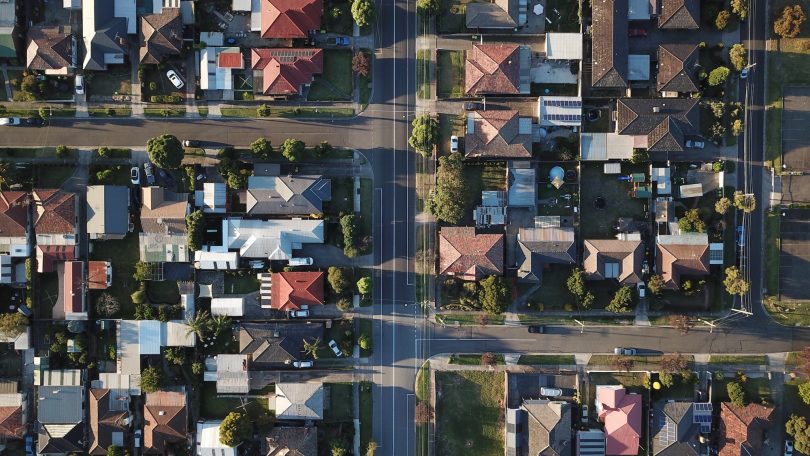The periphery of Melbourne has an amenity problem. Amenity, referring to desirability, can be found in the diverse landscapes and natural habitats outside of the city, in the coastal or inland environments of Melbourne’s green wedge and peri-urban areas.
RMIT University environment and planning emeritus professor Michael Buxton said amenity attracts and it was a terrible conundrum, as the more people wanting to live or visit these areas leads to the depletion of the very amenity people sought.
Melbourne has 12 green wedge areas across 17 municipalities, as well as its diverse peri- urban area which Prof Buxton said is the peripheral urban belt of land that extends from the edge of a city area for about 100 to 150km.
Prof Buxton co-authored The Future of the Fringe, which discussed the crisis in peri-urban planning and was published by CSIRO last year.
In The Future of the Fringe, prof Buxton and RMIT University planning and environment associate professor Andrew Butt, wrote population increases and migrations to urban fringes, suburbanisation, spatial fragmentation of land, resource depletion, and loss of traditional land use, especially agriculture, exerted pressure on peri-urban resources.
In terms of food production capacity, prof Buxton said the peri-urban area produced over 40% of Melbourne’s food needs.
Thus, Melbourne’s green wedges and peri-urban areas weren’t just attractive, but also key to keeping Melbourne fed.
RMIT University planners told The Age last year productive farmland on the fringe was essential for the city to weather future, inevitable crises like the pandemic.
As attention turned to the fringe’s future-proofing potential, the Victorian government’s project ‘Planning for Melbourne’s Green Wedges and Agricultural Land’ entered its final stages.
The government’s review began in 2018 and the project outcomes would be delivered 2021 – 2022, with the report for phase two due for release this year.
The project’s overview said the government was committed to protecting Melbourne’s green wedges and keeping farms on urban fringes working and producing for “generations to come”.
“Robust planning controls are needed to maintain the benefits provided by green wedges and manage land use to support long term agricultural use that serves the needs of Melbourne’s growing population,” the overview on the Engage Victoria website said.
The first phase of ‘Planning for Melbourne’s Green Wedges and Agricultural Land’ included consultations with green wedge councils.
North-East of Melbourne’s CBD in a green wedge, Hurstbridge food grower Paula McLeod shares food with the community through Hurstbridge Farmgate, and said the impact of COVID meant people were forced to look at their local area.
Ms McLeod said people experiencing food security as well as locals asked them to provide vegetables.
“The food system itself is under a lot of stress. And so, when something happens out of the ordinary like COVID, the pressure it applies to that makes it difficult for the ‘just in time’ and ‘just enough’ delivery process to occur,” she said.
While the broad acre paradigm of farming remains front-of-mind, many small- scale farms occupied Melbourne’s peri-urban areas.
RMIT’s Prof Buxton said some smaller farms were important for their produce and intensive agricultural production, but preventing further subdivisions and increases in land prices was vital for their viability.
A University of Melbourne 2019 report led by Dr Rachel Carey outlined a roadmap for protecting Melbourne’s ‘foodbowl’ and highlighted farm viability as an area for policy action.
The report said farmers in Victoria were caught in a tight cost-price squeeze, as costs of inputs such as water and fertilisers rose, and would rise further with climate change, and farmgate prices for produce fell.
The report also said the cost of farmland on Melbourne’s fringe was fuelled by speculative investment in land close to the Urban Growth Boundary (UGB), which made entry difficult for new farmers.
Prof Buxton said a peri-urban area of intensive agriculture and smaller blocks was the Yarra Valley, which experienced increased protection when the Hamer government confronted the area’s infinite issue of amenity by stopping population growth and subdivision and township growth.
Since then and elsewhere, the policies that dealt with Melbourne’s urban growth have been fragmented.
Melbourne’s Urban Growth Boundary, for example, was extended to accommodate new dwellings because of population projections.
The ‘Planning for Melbourne’s Green Wedges’ outline said there were no plans to expand the UGB, but Prof Buxton said it was a critical time for green wedges because in this review, the government could liberalise policies even more or at least not toughen them up.
“If we’re not careful we’re going to lose what we have now, we’ve already lost the historically important areas…” he said.
While proximity to the city has the effect of increasing land costs and development profit incentives, access to urban markets and other urban activities was an advantage for fringe farms.
Melbourne Farmers Markets (MFM), a social enterprise that connects Victorian farmers to urban communities, ran about 20 market days per month before COVID, but then operated safely at a reduced capacity.
MFM founder and director Miranda Sharp said many farmers from the fringe of Melbourne sold their produce at MFM markets and were majority small-scale family businesses, including very specialised producers.
“We appeal to a changing audience of people who really want to know where their food comes from,” Ms Sharp said.
Ms Sharp said they were able to support growers as other avenues of income were decimated.

Image by Mariah Edgoose. Taken at Abbotsford Farmer’s Market with permission of Peninsula Fresh.

Image by Mariah Edgoose. Historically important areas of agriculture and fruit growing in Melbourne’s north-east.
Feature image by Tom Rumble taken from Unsplash. Aerial view of Melbourne.

